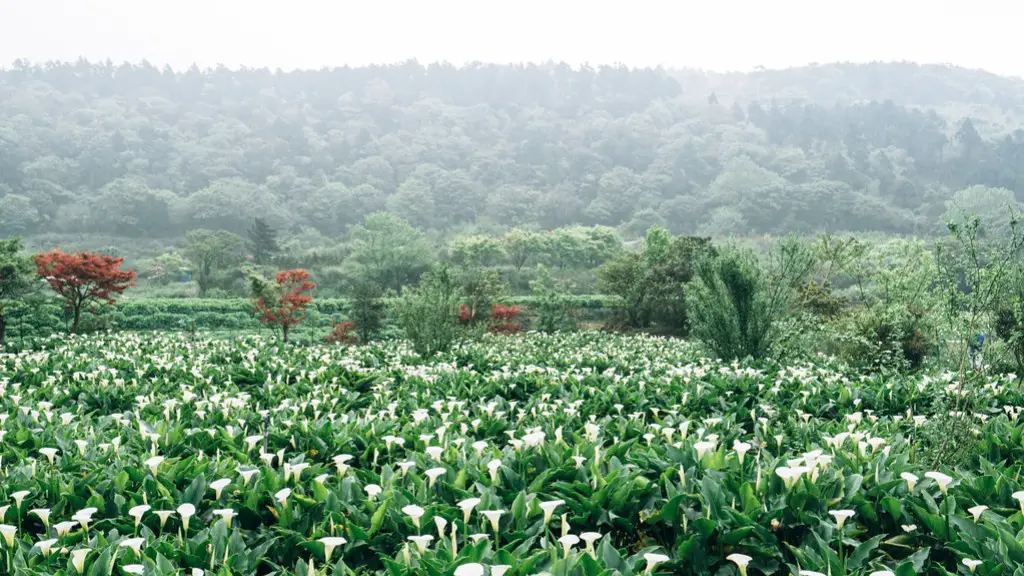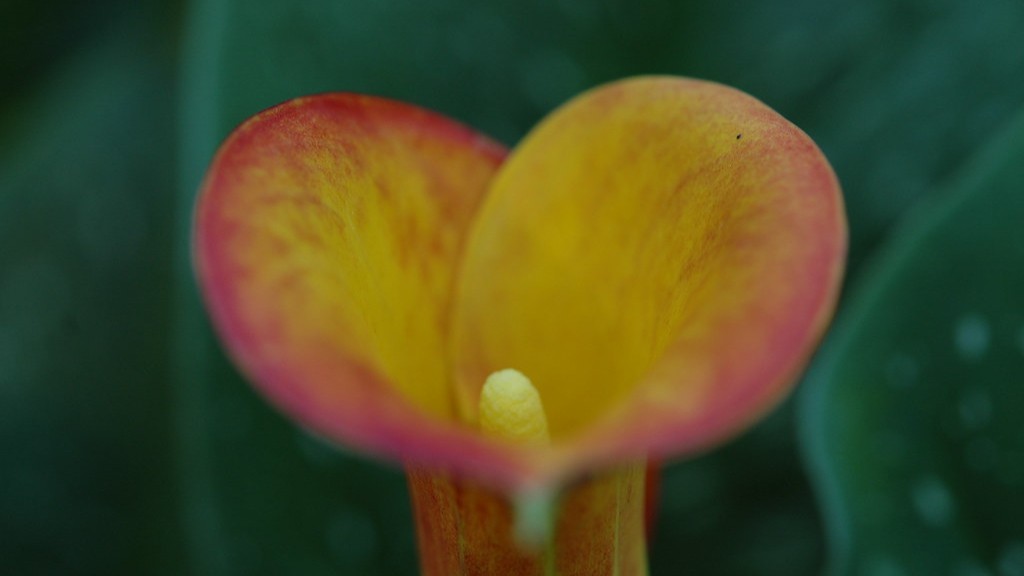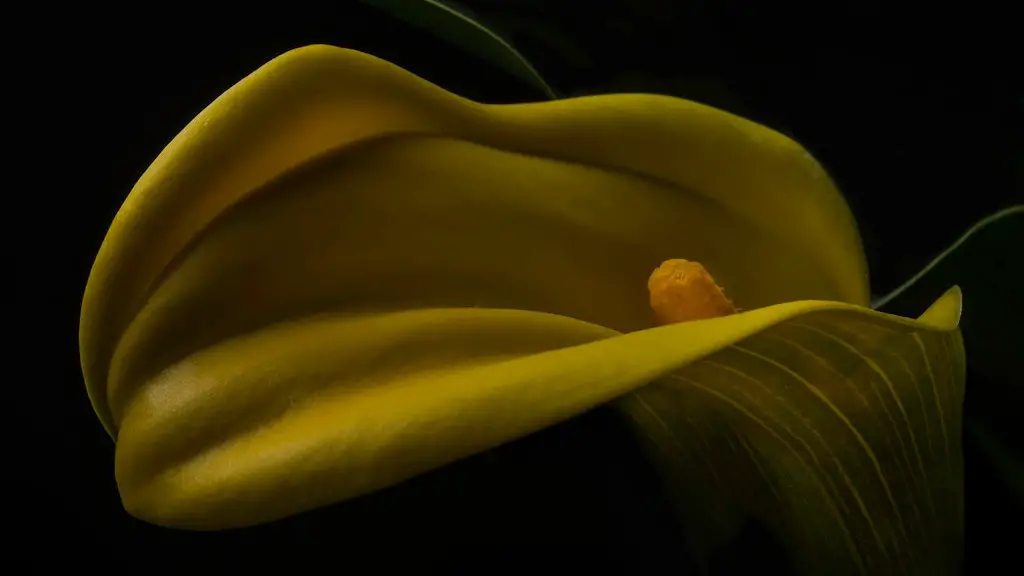The Calla Lily is a beautiful flowering plant that blooms in the spring. They are native to Africa, and grow in wet, marshy areas. Calla Lilies are also known as Zantedeschia, and are a member of the Araceae family. The white Calla Lily is the most common, but they can also be found in yellow, pink, and orange.
They bloom in the spring.
What months do calla lilies bloom?
If you want to transfer your calla lilies indoors, do so at the first freeze. You can replant them outdoors each spring. If you leave them in the ground, they’ll be considered annuals and the roots will die when frozen. The flowers bloom in the late spring and throughout the summer.
If you have a potted calla lily, you can save it and it will bloom again next year. Calla lilies are actually perennials, not annuals. Many people treat them as annuals, but they can last much longer than that.
How do I get my calla lily to bloom
If you want your calla lily plant to bloom, you should place it in a cool, dark place for two months. After this, bring it back out into the light and resume watering it. The foliage will regrow and you calla lily plant will start to bloom shortly thereafter.
Here are a few tips for caring for callas indoors:
-Keep the soil moist, but not soggy
-Provide bright, indirect light
-Apply liquid fertilizer monthly while in flower
-Keep away from heating and A/C vents
-Reduce watering when the plant enters dormancy (November)
-Cut the leaves off at soil level once they’ve died
Why is my calla lily not flowering?
If your calla lilies do not bloom, the potential reasons include:
-Excess nitrogen in the soil
-Not enough moisture
-Too much shade
-Inadequate dormancy periods (should last at least 2-3 months)
-Foliage removed too early (preventing the plant from storing enough energy)
-Deficient calla lily rhizomes
-Incorrect planting depth
Yes, calla lilies do spread. They are a bulbous plant, which means they multiply by creating new bulbs. These new bulbs can be dug up and replanted in different locations. While calla lilies do spread, they do so in a manner which is quite easy to control.
Do you cut down calla lilies in the fall?
Calla lilies are tender perennials that require special care when storing over the winter months. Their rhizomes must be dug up in fall and cut off the foliage 1-2 inches above the soil surface after a killing frost. Calla lilies are beautiful flowers that add a touch of elegance to any garden.
Cut the calla lily stems at an angle, using a sharp knife or garden shears. This will help the stems to absorb more water.
Fill a clean vase with cool water and add a Floral Food packet or aspirin.
Place the calla lilies in the vase, making sure that all the stems are submerged.
Change the water every other day and re-cut the stems at an angle each time.
Can you leave calla lilies in pots over winter
Before freezing weather arrives, bring potted calla lilies indoors unless you live in Zones 8 to 10. These tropical plants can overwinter outdoors in these zones but will be damaged or killed in temperatures below 25°F. Put the pots in a sunny window to continue growing, or dig up the rhizomes and store them indoors.
It’s important not to water your calla lilies too heavily, especially after initially planting them. Once the rhizomes are established, you can water the plants once a week, or more frequently if experiencing especially hot or drought-like conditions.
Why does my canna lily have leaves but no flowers?
One common problem that can occur with cannas is that they may not flower. This is often due to starting the rhizomes too late, but can also be due to a lack of water or poor soil fertility. If you notice that the plants have distorted foliage or a yellow streaking or mosaic pattern on the leaves, this may be an indication that they are infected with a virus.
When growing calla lilies, it is important to provide them with bright light. However, the plants should be protected from the strongest midday sun. They will also tolerate partial shade. It is important to shelter calla lilies from wind to prevent them from being damaged.
Should you deadhead calla lilies
Second, calla lily deadheading is important for growing large, healthy rhizomes to plant for next year’s flowers. Spent flowers tend to turn into seed pods, which use up resources better left for other tasks. Deadheading helps to prevent this from happening, and also encourages the plant to produce more flowers.
These flowers are called calochortus and they can be picky about their temperatures. For ideal growing conditions, expose the bulbs to days no hotter than 65°F and no colder than 55°F. The above ground plant can tolerate temperatures as high as 75°F. If your home is hot, use mulch to keep the bulb cooler in its pot.
Do calla lilies spread?
Calla lilies are beautiful flowers that spread by multiplying and creating other bulbs. While they can spread quite easily, they are easy to control. By digging up and replanting the bulbs in different locations, you can keep them under control.
If your calla lily plant has leaves with very dark tips, you may be over-fertilizing it. Try cutting back on the fertilizer, and adding coffee grounds between fertilizing rounds. Calla lilies like acidic soil, so the coffee grounds will help to create that conditions.
What does a calla lily symbolize
The calla lily is a versatile flower that can represent both life and death. In ancient Greek culture, the calla lily was thought to represent magnificent beauty. This origin stems from a tale regarding Hercules as a baby. On one hand, the calla lily meaning expresses the idea of life and fertility. On the other hand, it is a well-known symbol of death.
After the calla lilies have dried, store the tubers in a cool, dry place for the winter. Be sure to check on the tubers periodically and if they start to sprout, replant them in potting soil.
Warp Up
The calla lily blooms in the spring.
The Calla Lily typically blooms in the spring and summer, but can also bloom in the fall.





